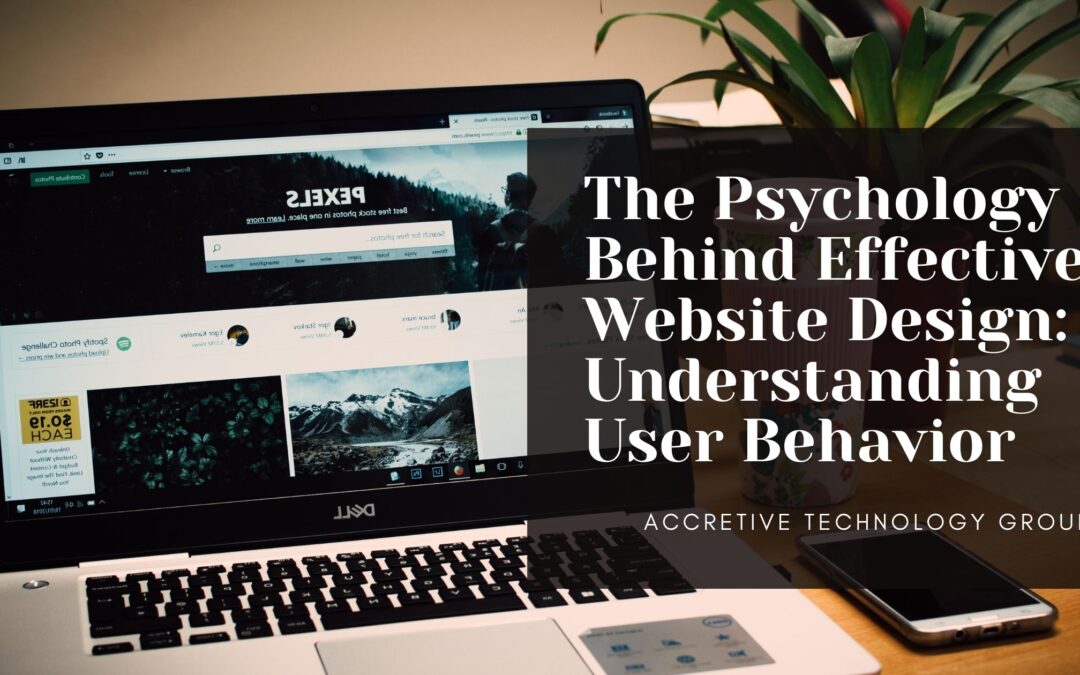In the digital age, where attention spans are shrinking and competition for online engagement is fierce, understanding the psychology behind effective website design is paramount. A well-designed website captivates visitors and influences their behavior, guiding them seamlessly through the user journey and towards desired actions. By delving into the principles of psychology, web designers can create interfaces that resonate with users subconsciously, leading to improved user experience, increased conversions, and overall success. Let’s explore some vital psychological factors that shape effective website design:
First Impressions Matter
As the old saying goes, “You never get a second chance to make a first impression.” This holds for website design as well. Studies have shown that users form an opinion about a website within milliseconds. Elements such as color scheme, typography, imagery, and layout are crucial in shaping this initial perception. By leveraging visual hierarchy and aesthetics principles, designers can create visually appealing websites that instantly capture users’ attention and encourage further exploration.
The Power of Simplicity
In a world inundated with information overload, simplicity reigns supreme. Websites cluttered with excessive text, graphics, or navigation options can overwhelm users and hinder their ability to find what they want. The psychological concept of cognitive fluency suggests that people prefer things that are easy to understand and process. By employing clean and minimalist design principles, designers can streamline the user experience, making it easier for visitors to navigate the website and achieve their goals.
Emotional Engagement
Humans are inherently emotional creatures, and emotions play a significant role in decision-making. Effective website design taps into users’ emotions to create a connection and foster engagement. This can be achieved through compelling storytelling, evocative imagery, and thoughtful use of color and typography. By eliciting positive emotions such as joy, trust, or excitement, designers can cultivate a favorable impression of the brand and encourage users to take desired actions, whether purchasing, signing up for a newsletter, or sharing content.
Social Proof and Trust Signals:
Social proof has emerged as a powerful psychological phenomenon in an era of social influence. People are more likely to trust and follow the actions of others, especially if they perceive them as similar or credible. Incorporating customer testimonials, user reviews, trust badges, and social media endorsements can instill confidence in visitors and alleviate concerns about credibility and trustworthiness. By showcasing positive experiences from real users, designers can leverage social proof to persuade hesitant visitors and boost conversions.
The Psychology of Color
Color psychology plays a significant role in influencing user behavior and perception. Different colors evoke different emotions and associations, affecting how users perceive a brand and interact with a website. For example, blue is often associated with trust and professionalism, making it a popular choice for corporate websites, while red can evoke a sense of urgency or passion, making it suitable for calls to action. By understanding the psychological impact of color, designers can strategically use color palettes to convey the desired mood and message.
The Principle of Scarcity
The scarcity principle suggests that people are more motivated to act when they perceive a resource is limited or in high demand. Design elements such as limited-time offers, countdown timers, or low-stock alerts can create a sense of urgency and encourage users to take immediate action. By leveraging scarcity tactics strategically, designers can drive conversions and capitalize on users’ fear of missing out (FOMO).
In conclusion, effective website design is not just about aesthetics; it’s about understanding the psychology of user behavior and leveraging that knowledge to create compelling and intuitive experiences. By considering first impressions, simplicity, emotional engagement, social proof, color psychology, and scarcity, designers can craft websites that resonate with users on a deeper level and drive meaningful interactions. Ultimately, by prioritizing user needs and preferences, designers can create experiences that delight users and contribute to the brand’s success.

